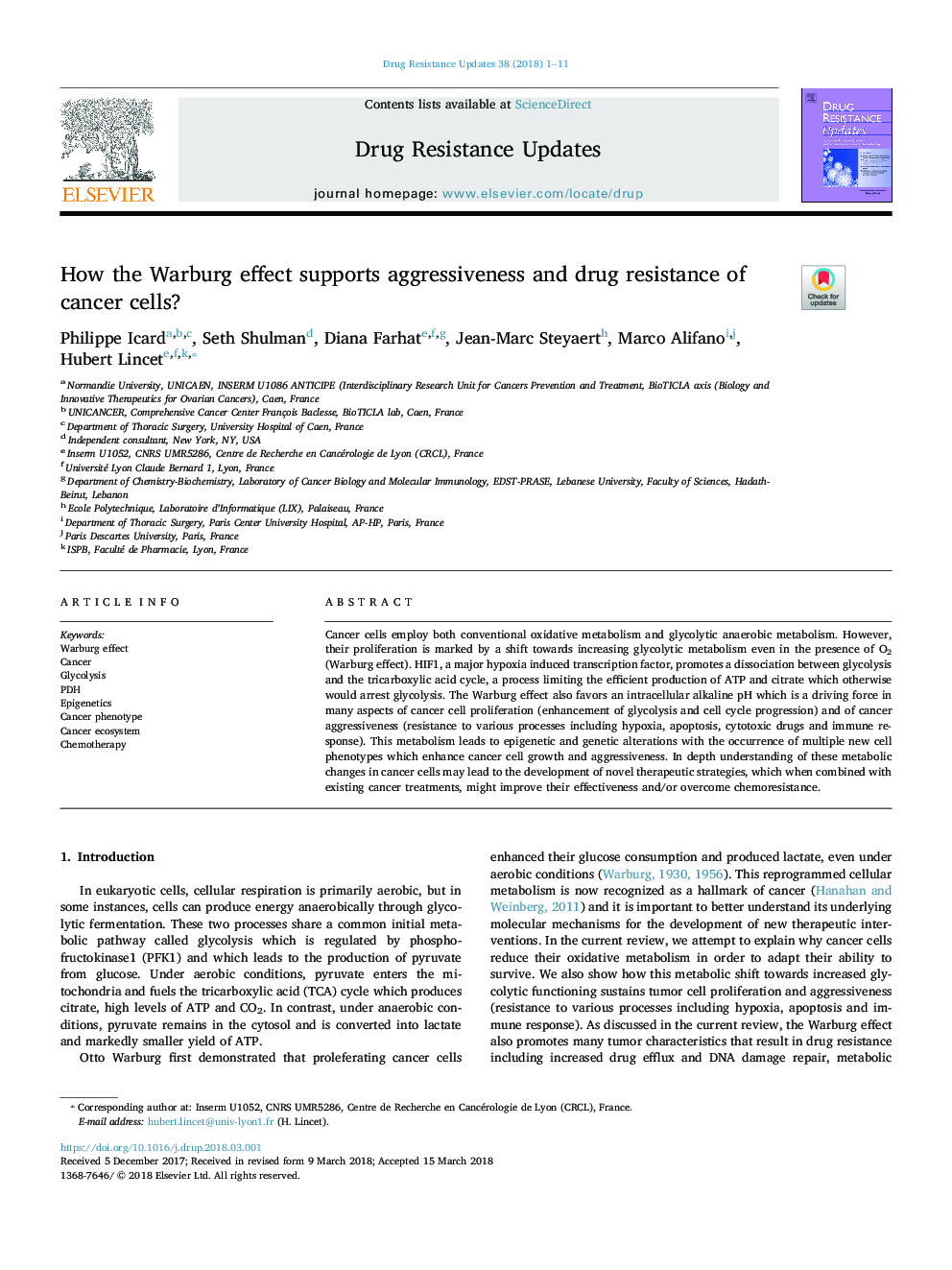| Article ID | Journal | Published Year | Pages | File Type |
|---|---|---|---|---|
| 8436441 | Drug Resistance Updates | 2018 | 11 Pages |
Abstract
Cancer cells employ both conventional oxidative metabolism and glycolytic anaerobic metabolism. However, their proliferation is marked by a shift towards increasing glycolytic metabolism even in the presence of O2 (Warburg effect). HIF1, a major hypoxia induced transcription factor, promotes a dissociation between glycolysis and the tricarboxylic acid cycle, a process limiting the efficient production of ATP and citrate which otherwise would arrest glycolysis. The Warburg effect also favors an intracellular alkaline pH which is a driving force in many aspects of cancer cell proliferation (enhancement of glycolysis and cell cycle progression) and of cancer aggressiveness (resistance to various processes including hypoxia, apoptosis, cytotoxic drugs and immune response). This metabolism leads to epigenetic and genetic alterations with the occurrence of multiple new cell phenotypes which enhance cancer cell growth and aggressiveness. In depth understanding of these metabolic changes in cancer cells may lead to the development of novel therapeutic strategies, which when combined with existing cancer treatments, might improve their effectiveness and/or overcome chemoresistance.
Related Topics
Life Sciences
Biochemistry, Genetics and Molecular Biology
Cancer Research
Authors
Philippe Icard, Seth Shulman, Diana Farhat, Jean-Marc Steyaert, Marco Alifano, Hubert Lincet,
